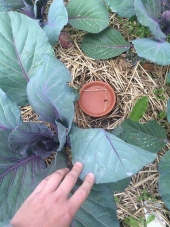posted 3 years ago
Hey,
So your talking about a drive way,
The trees that were on the driveway and near it are gone, making it dangerous to drive on,
Other wise just put a stake in the holes and leave them be, let them fill with leaves and collect humus, and grow things in them.
in the driving case, yes, post adds on line asking for free fill, concrete, tiles, bricks, ect.
I have done this, with tiles, and unfortunately got a piece of tile, speared into my arm and I have a scar and I did accidently shook hands with a guy and put blood on them. I laid the tiles along a pasture driveway, free dumping from a renovation. So wear correct PPE, this includes long sleeves and My new friends after getting a bit of blade spearing 4mm through my right cornea, safety glasses!
Glass will work its way up and will just cause a mess, you need to pummel it so small. not really worth it.
Tiles and bricks and concrete small to pieces larger than 10mm.
Smashing up waste and filling the holes is a fine, putting ash and rubbish in holes has been done for 1000s of years.
how to fill the holes for this purpose,
First, clear out the holes,
Burn the holes if you want,
Next you will mix sand, debris of rubbish at sizes 10mm to 30mm (if glass used smash, into grains, if your using metal cans then cut them up, into flat strips and keep a few inches from any end part of the mixture, ) and some bone char or lime into the hole,
You will then hose this in and stir this and let it set,
And just for explanation sake, in nature without humans driving on these spaces, stump holes are awesome they oxygenate the soils, feed the soils, collect humus, collect moisture and rain. so those ugly stump holes are awesome!
Regards,
Alex





 6
6






 4
4




 4
4




 6
6














 3
3




 1
1








